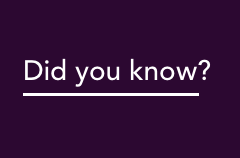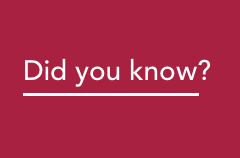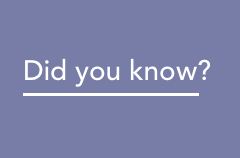The implementation of the Retailer Reliability Obligation (RRO) was agreed at the Council of Australian Governments (COAG) Energy Council meeting on 26 October 2018. The necessary legislative and National Electricity Rules (NER) changes took effect on 1 July 2019.
A key component of the RRO is the calculation of a five-year reliability forecast and five-year indicative reliability forecast for each National Electricity Market (NEM) region, to be published in AEMO’s Electricity Statement of Opportunities (ESOO). If the reliability forecast identifies a material reliability gap three years ahead, AEMO will submit a reliability instrument request to the Australian Energy Regulator (AER).
Interim Reliability Forecast Guidelines
In October 2019 AEMO will commence consultation on Interim Reliability Forecast Guidelines that will apply for the 2020 ESOO and take into account the Australian Energy Regulator’s Interim Forecasting Best Practice Guidelines due end of September 2019.
In the absence of those Guidelines for the 2019 ESOO, AEMO has been consulting with all interested stakeholders on the methodology it will use to produce reliability forecasts for the 2019 ESOO. AEMO’s objectives for this consultation were to apply the principles of transparency, accuracy, and engagement set out in the RRO rules, and to take account of reasonable stakeholder expectations in its forecasting approach.
Reliability Forecasting Methodology Issues Paper
AEMO began the consultation process on 17 April 2019, with the publication of the Reliability Forecasting Methodology Issues Paper.
The Issues Paper sought industry feedback on whether the proposed methodology was appropriate for calculating key parameters required to accompany any reliability instrument request if triggered from the reliability forecasts to be published as part of the 2019 ESOO for the NEM.
AEMO and invited written submissions from interested stakeholders, as detailed in the Consultation Timeline below, and subsequently held an Industry Workshop to discuss the Issues Paper ahead of the submission due date.
The Final Report represents AEMO’s response to the submissions. Alongside this, AEMO has published its amended methodology.
Consultation Timeline
|
Deliverable |
Indicative date |
Status |
|
Issues Paper published |
Wednesday 17 April 2019 |
Completed |
|
Industry workshop |
Thursday 9 May 2019 |
Completed |
|
Submissions due on Issues Paper |
Wednesday 22 May 2019 |
Completed |
|
Industry briefing on AEMO’s response |
Friday 21 June 2019 |
Completed |
|
Final report published |
Friday 12 July 2019 |
Completed |
Final determination
On Friday 12 July, AEMO published its Final Report and accompanying Reliability Forecasting Methodology Paper.
- Final Report (497 KB, pdf)
- Reliability Forecasting Methodology Paper (510 KB, pdf)
Also, on 21 June AEMO held a briefing for its stakeholders going through its intended responses. The slide pack from the briefing is available here:
- Industry briefing 21 June - combined slide pack (789 KB, pdf)
Issues Paper
On 17 April, AEMO started consultation with the publication of its Reliability Forecasting Methodology Issues Paper.
- Issues paper (811 KB, pdf)
AEMO held a stakeholder workshop 9 May to allow stakeholders to seek additional clarity around the points raised in the issues paper before making their submissions. The slide pack from the workshop is available here:
- Industry Workshop 9 May - combined slide pack (1.6 MB, pdf)
In addition to the issues paper, AEMO prepared:
- A minor update to the Reliability Standard Implementation Guidelines, improving consistency of wording, updating terminology and broken links (this has been change-marked to show where it differs from the current version).
- A draft update to the ESOO Methodology document.
- A draft version of the Electricity Demand Forecasting Methodology Information Paper, which through change-marks shows where the demand forecasting methodology is proposed to change for the 2019 demand forecasts underpinning the 2019 ESOO and associated reliability forecast.
- An addendum to the issues paper explaining the reasoning behind the proposed approach for calculating the reliability gap period and likely trading intervals.
The first three documents are presented as drafts here, and will, subject to any feedback from stakeholders, be made final along with the publication of the ESOO in August 2019:
- Reliability Standard Implementation Guidelines – Draft 2019 update (516 KB, pdf)
- ESOO Methodology Document – Draft 2019 Update (325 KB, pdf)
- Electricity Demand Forecasting Methodology Information Paper – Draft 2019 update (1.9 MB, pdf)
- Reliability Forecasting Methodology Issues Paper addendum (350 KB, pdf)
Issues Paper Submissions
- AEC submission (178 KB, pdf)
- AGL submission (83 KB, pdf)
- Energy Consumers Australia submission (487 KB, pdf)
- Energy Queensland submission (253 KB, pdf)
- EnergyAustralia submission (130 KB, pdf)
- Engie submission (296 KB, pdf)
- ERM Power submission (205 KB, pdf)
- EUAA submission (178 KB, pdf)
- Flow Power submission (208 KB, pdf)
- MEA and Powershop submission (137 KB, pdf)
- MEU submission (42 KB, pdf)
- PIAC submission (264 KB, pdf)
- QUEN submission (88 KB, pdf)
- Sligar and Associates submission (46 KB, pdf)
- Snowy Hydro submission (350 KB, pdf)






